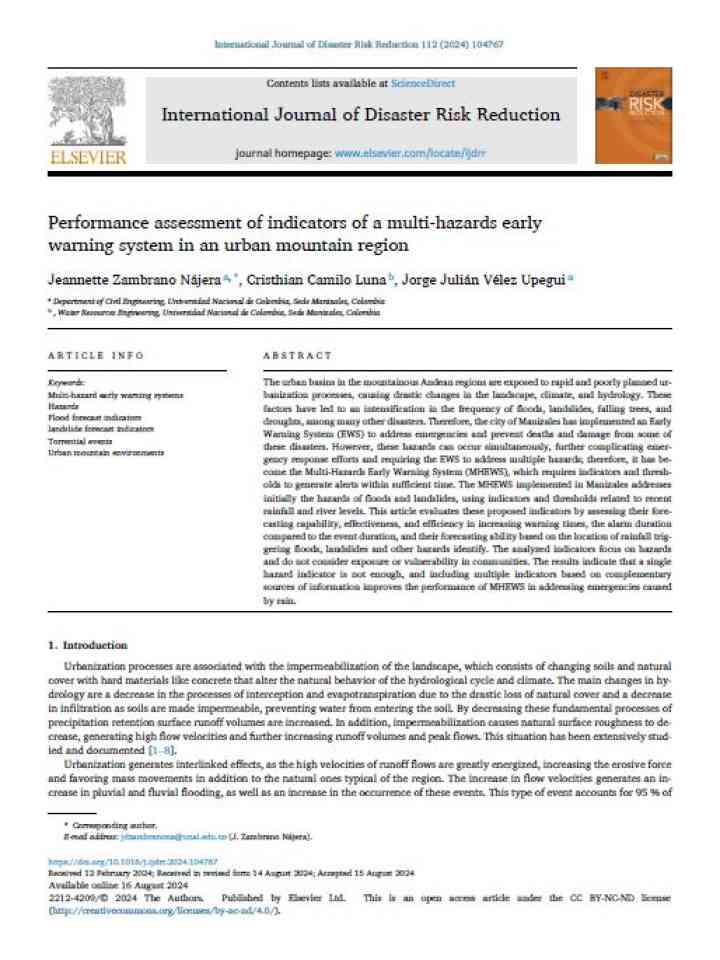Performance assessment of indicators of a multi-hazards early warning system in an urban mountain region
This article evaluates these early warning systems indicators by assessing their forecasting capability, effectiveness, and efficiency in increasing warning times, the alarm duration compared to the event duration, and their forecasting ability based on the location of rainfall triggering floods, landslides and other hazards identify. The analyzed indicators focus on hazards and do not consider exposure or vulnerability in communities. The results indicate that a single hazard indicator is not enough, and including multiple indicators based on complementary sources of information improves the performance of MHEWS in addressing emergencies caused by rain.
The urban basins in the mountainous Andean regions are exposed to rapid and poorly planned urbanization processes, causing drastic changes in the landscape, climate, and hydrology. These factors have led to an intensification in the frequency of floods, landslides, falling trees, and droughts, among many other disasters. Therefore, the city of Manizales has implemented an Early Warning System (EWS) to address emergencies and prevent deaths and damage from some of these disasters. However, these hazards can occur simultaneously, further complicating emergency response efforts and requiring the EWS to address multiple hazards; therefore, it has become the Multi-Hazards Early Warning System (MHEWS), which requires indicators and thresholds to generate alerts within sufficient time. The MHEWS implemented in Manizales addresses initially the hazards of floods and landslides, using indicators and thresholds related to recent rainfall and river levels.
Explore further
